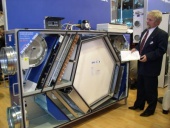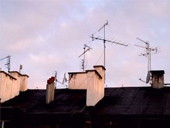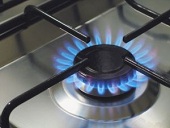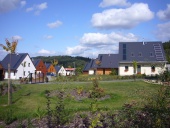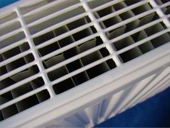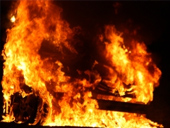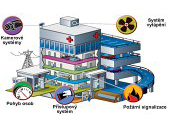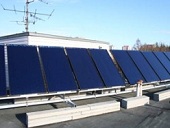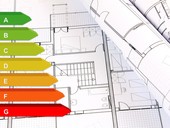Low energy (LEB) and passive buildings (PB) are becoming standard for new constructions in EU countries. They aren't experiments anymore, but absolutely ordinary mass production of sophisticated residential buildings. Only in Germany, Austria and Switzerland there are already thousands of buildings that meet the passive standard and their number doubles every year. The cost of passive buildings is only 5-7 % higher than those of conventional ones, and yet, their consumption of energy and heating is up to 90 % lower! Part 2. about regulation ventilation system.
Archiv článků od 23.8.2010 do 14.2.2011
Low energy (LEB) and passive buildings (PB) are becoming standard for new constructions in EU countries. They aren't experiments anymore, but absolutely ordinary mass production of sophisticated residential buildings. Only in Germany, Austria and Switzerland there are already thousands of buildings that meet the passive standard and their number doubles every year. The cost of passive buildings is only 5-7 % higher than those of conventional ones, and yet, their consumption of energy and heating is up to 90 % lower!
Author raises discussion and proposed changes in the rules of the energy audit. Draws attention to the criteria for evaluating alternatives and to small requirements for variability solutions. Read controversy of the author and reviewer who considers the methodology as sufficient and sees a problem in processing audits.
The author of this expertly written article shows, with results practically verified, that the proper functioning of heating with savings of up to 40% with a 1.3ºC increase of internal temperature can be guaranteed only with the proper activation of temperature sensors and with a complete projected adjustment of thermoregualted valves and heads, which traditional heating projects do not address. That is why traditional heating projects do not provide neither the proper functioning, nor full heat savings from the control technologies.
On Jan. 1st, 2011 the Government Regulation 91/2010 Coll., on the conditions of fire safety during the operation of chimneys, flues and fuel appliances, will come into force. On that day they Decree no. 111/1981, on the cleaning of chimneys, will be repealed. The following text is focused mainly of the provisions related to the venting of gas appliances.
The directive 2010/31/EU on the Energy Performance of Buildings – called EPB, EPBD II or EPBD Recast – was passed last May. EU member countries are obliged to implement these new requirements into their national legislations. The implementation of 2010/31/EU was addressed by a number of seminars during the recent Aqua-therm 2010 trade fair. The following article presents you with the most important facts from the presentations and with links to information that was published before and during Aqua-Therm 2010.
Designing solar systems so they will produce the the most heat during the year or electricity at the lowest cost is quite a complex matter. A number of factors should be considered when calculating the solar systems, especially the intensity of the solar radiation in individual locations throughout the year. Without a simulation software that can work with this variable data, the calculation can only be very approximate. If we want to get more accurate results and fast, using sofware is esential.
Article provides detailed information about long-term tests of heat pumps, made by the agency Frauhofer ISE. It monitored the effectiveness of the use of heat pump air-water, ground-water and water-water in the 170 low-energy houses and in existing buildings. Author used the measured values of seasonal performace factors and the current energy prices in the Czech Republic to present the differences between different types of heat pumps and heating systems.
Imact of heat cost allocation measurement on heat consumption is discussed in the introductory part of the paper. Two different ways of heat balance are described further. One, based on heat incoming into a measured room, and the other based on heat leaving the room. In both cases the heat cost allocator‘s measured values are compared with economic behaviour of a flat user. Cost allocator’s measured values are converted into heat cost ratio on total heat cost of the whole building. The measured values of indicators and their variance are compared under operational conditions with billed price for each flat user.
There has been a lot of talk lately about disconnecting from the central heating supply. And not only that, some housing cooperatives and unit owners have already taken this step, or are planning to do so. Are those who have disconnected from the central heating supply, and have their own boilers, satisfied and have they saved money?
Heat released in biomass combustion can be effectively stored in an accumulation tank. Traditionally, water is used as a main heat transfer medium. However, progressive materials, such as Phase Change Materials (PCM´s), offer better heat storage capacities. The materials work on principle of sensible and latent heat accumulation / release. While the phase change material takes up the heat, during the reversed process the stored latent heat is released. In our work the following materials were studied: paraffinic waxes, fatty acids and their eutectic mixtures. These materials provide higher heat potential per unit volume. Therefore, PCM´s can prolong the lifetime of biomass-fired systems.
A revised version of the directive was issued in 2010 under the title 2010/31/EU. In part, it is a modification of the original. In it, there are have been defined new administrative tools to increase the energy performance of buildings - among others, it includes the concept of "building with almost 0 energy consumption".
Due to rising energy prices heating systems face a number of disadvantages associated with the use of central heating supplies to heat residential and non-residential spaces. This is a strong trend in condominium owned residential buildings in the care of SVJ, in rental housing it is almost non existent and it is contradictory in cooperative housing, which is a modification or rental housing.
zpět na aktuální články
